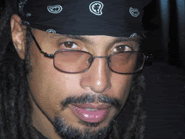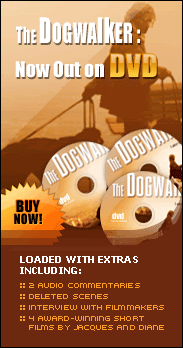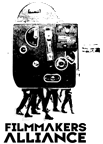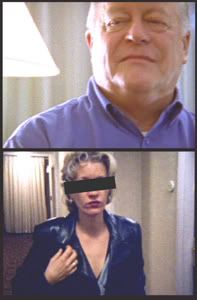Let's see now,...where did we leave things in Part 1? I believe we left them at....
How?
Yes, that's the big question. How do we develop ideas, concepts and/or stories in a way that supports our goals for the finished film?
Well, there is an approach that was offered to me by my talented fellow filmmaker/writer and creative collaborator, Sean Hood. It is a similar, but more structured, approach to the one I've been using for many years. I'll call it the "Bucket System" (not to be confused with that dismal film "The Bucket List") - although he probably has much more appropriate name for it.
And it is simply this: Once you are confident your idea, concept or story is in-sync with your filmmaking goals, you immediately start aggregating assests (to steal from internet lingo). Meaning, instead of sitting in front of a blank page scratching your head trying to figure out how to begin writing and what specific things you need to do flesh out your goals for the film, you start accumulating bits and pieces obsessively and without judgement and you simply throw them into a "bucket". Sean's bucket is an old school writing tablet - y'know those ones from grade school with a hard cover that is black with white speckles and have lined paper inside. But that bucket can be anything - a notepad, your computer/laptop, a voice recorder, cell phone - anything. Sean handwrites ideas, thoughts, impressions, pieces of dialogue - practically ANYTHING that crosses his mind. You should do this without judgement and without hesitation. It may or may not be specifically relevant to your idea, concept or story. At this point, that's not important. What's important is that you allow yourself to freely generate smaller ideas that might possibly support the larger idea. Let it be stream of consciousness - dreams, images, conversations you've had with others (or yourself), memories, wild thoughts, etc., etc. Dump it ALL in your "bucket".
During this period, It's really important to open your mind. Meaning, be very aware of things around you and how they make you feel - visuals, conversations, arguments, smells, moods, whatever. Also, be aware of your thoughts, ideas and dreams. It's just really important to be very "awake" during this period so that you mind is fertile and creating lots of assets for your bucket(s).
Of course, this is a good time to find sources of inspiration, as well. Art galleries, concerts, plays, hikes, music, books - anything that gets your mind and creative energy working. And whatever emerges for you goes into the bucket(s).
Once a week - or as often as you feel inclined - go through your bucket and start picking out the things that are relevant to your idea, concept and/or story. If you are writing in a tablet, tear out those pieces and put them in a separate folder, then type them into a separate document. If you are talking into a voice recorder, transcribe those pieces into a written document. If you have ideas on a computer, create a new document and re-type them in. Don't just cut and paste. The re-creating of the bucket things into a new document process always breeds another level of fresh ideas.
And do not trash the bucket items you do not use. They may be meaningful to you down the line in some way....or on another project. Keep them so you can return to them at some point in the future.
After you've done this for awhile, your idea, concept and/or story will begin to take shape. How? It just does, trust me. If not, just keep adding to your bucket. But at some point, those bucket items will start to form the structural pillars of your project.
From here, there are many things you can do to start organizing your "assets" into a script (or conceptual plan if you are just working off of a concept). Sean has his specific method that he will share with you in this blog at some point. For me, it is important to then write a treatment. Not one of those long, drawn out 40 page treatments. Just something that clarifies for me the visceral trajectory of the project. I usually sketch out a 5 to 10 page treatment. For me the treatment is the most important single document. Even more so than the script. The script will have a lot of specifics around which we plan the shooting, but those are all subject to change or deletion at any point. The treatment embodies the core elements of the project and helps to keep my goals for he project clear.
Finally, I start writing the script. Although Sean has introduced me to yet another step that I have yet to try, but about which I am very excited. Rather than jump right to the script, he suggests writing down scene headings. Such as:
INT. - DENNY'S APARTMENT - NIGHT
Nothing more than this. You are simply starting to chart out what happens and when. You may not use many of the scene headings you create (because you may find you don't need the scene). Or they may change order in all kinds of way. But like a rough draft, it is a beginning blueprint for the script (which, in turn, is a blueprint for the film). After this, you finally write the script (if it is indeed a script you are writing).
I promise you, if you take all of these steps, you will be far more productive and create a project that is far more satisfying to you than if you simply cough up an idea and then jump straight into trying to write or make a film. But here I must remind you of something by harkening back to my previous blog. Creating the Goal List is an essential part of the process. I cannot begin to express to you how well it pays off to do that work - until you yourself have done it and completed a film.
So, in summary, here's the steps I've outlined in Parts 1 and 2:
1. Start with you idea, concept and/or story. Even a germ of the idea.
2. Create your list of goals for the eventual film. Don't forget practical goals - like a goal of making the film with money you can realistically raise.
3. Compare/contrast your goals to your idea, concept or story and put them in sync with each other.
4. Start filling your "bucket" or buckets.
5. Select the things out of your bucket(s) that are relevant to your project and put them into a separate written document.
6. Write a Treatment.
7. Create Scene Headings.
8. Write that script (if you are writing a script).
Lastly, ignore all of this if you are a cinematic genius or if you have your own successful system that allows you to churn out amazing projects.
In any case, get busy developing that idea, concept and/or story. Feature or short. Fiction or Documentary. Live action or animation. Doesn't matter. The process is the same and it pays off just as well with any type of film you choose to do.
Just go do it.
Subscribe to:
Post Comments (Atom)















Excellent post...
ReplyDeleteMatch, Set... Game...